Tom's Guide Verdict
The Sennheiser Profile is a versatile USB mic for all kinds of presentations, and thanks to great ease of use and high sound quality it's my new favorite for recording and podcasting.
Pros
- +
Simulates the studio setup
- +
Easy plug-and-play setup
- +
Visible indicator for hot signals and plosives
Cons
- -
No pop filter
Why you can trust Tom's Guide
Price: $199 / £177 / AU$349 (as tested with Streaming Set)
Connection: USB
Ports: USB
Condensers: Cardioid
Directional patterns: Unidirectional
Size: 7.2 x 4.5 x 8.7 inches
Weight: 12.3 oz (2.6 lbs with boom arm)
When it comes to the best USB microphones, top-tier names like Blue Yeti, JLab, and Shure are among the more popular. But audio maker Sennheiser also has a similarly versatile model with the Sennheiser Profile USB microphone to give audio quality a serious upgrade for all kinds of applications.
The basic edition of the Sennheiser Profile USB microphone comes with an adequate table top/desk stand. I recommend opting for the $199 Streaming Set though, which comes with a boom arm, and transformed my cluttered desk into a studio ready for podcasting or streaming in 5 minutes.
Sennheiser Profile review: Price and availability
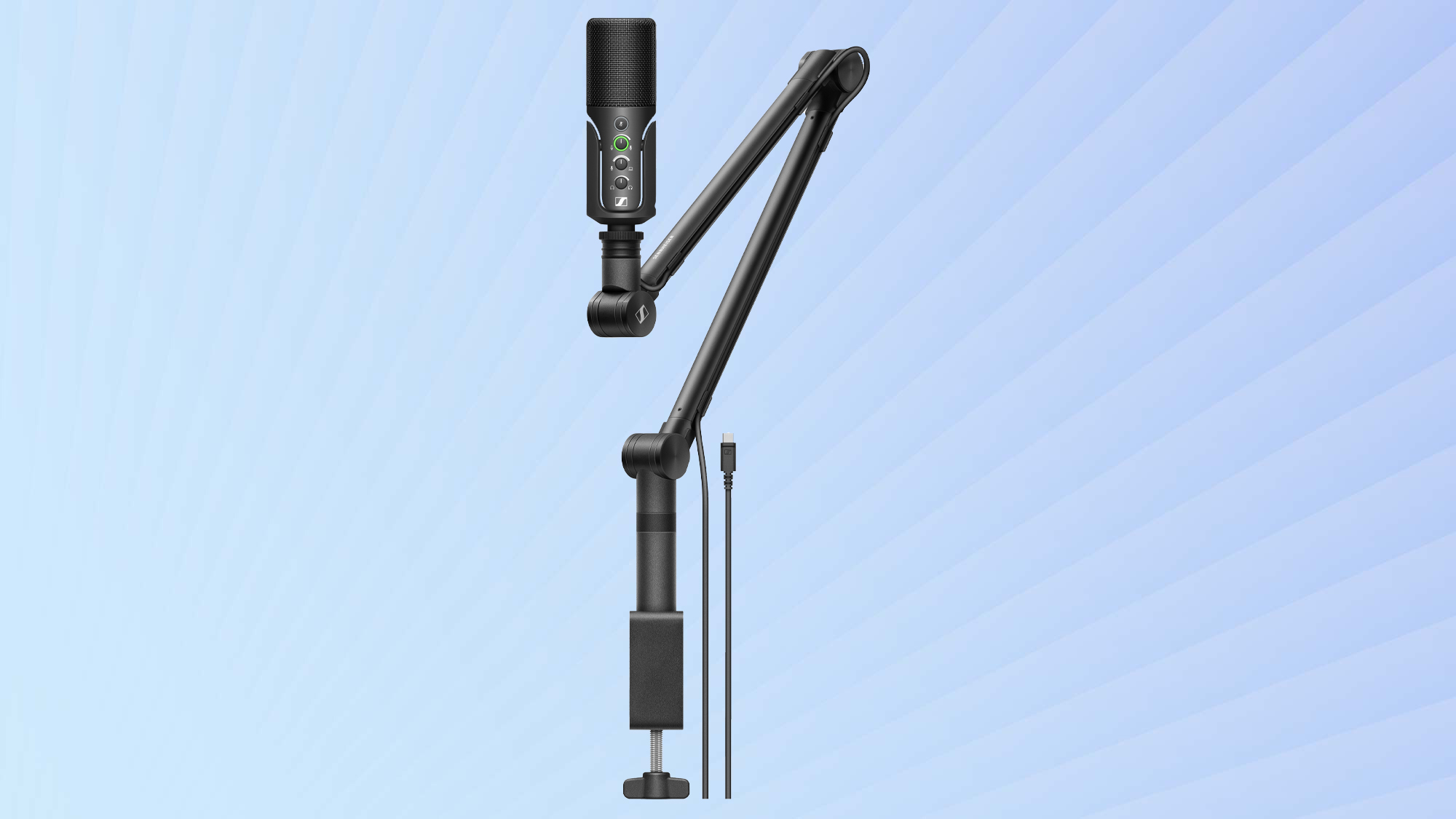
The Sennheiser Profile USB microphone with table stand is available at $129 via the Sennheiser website (£108 / AU$239), with links to online retailers including Amazon, B&H, and Sweetwater. Alternatively, buyers can opt for the $199 Profile Streaming Set as tested (£176 / AU$349), which provides cost savings on the mic, boom arm ($99 when sold separately) and USB cable ($19).
Sennheiser Profile review: Design
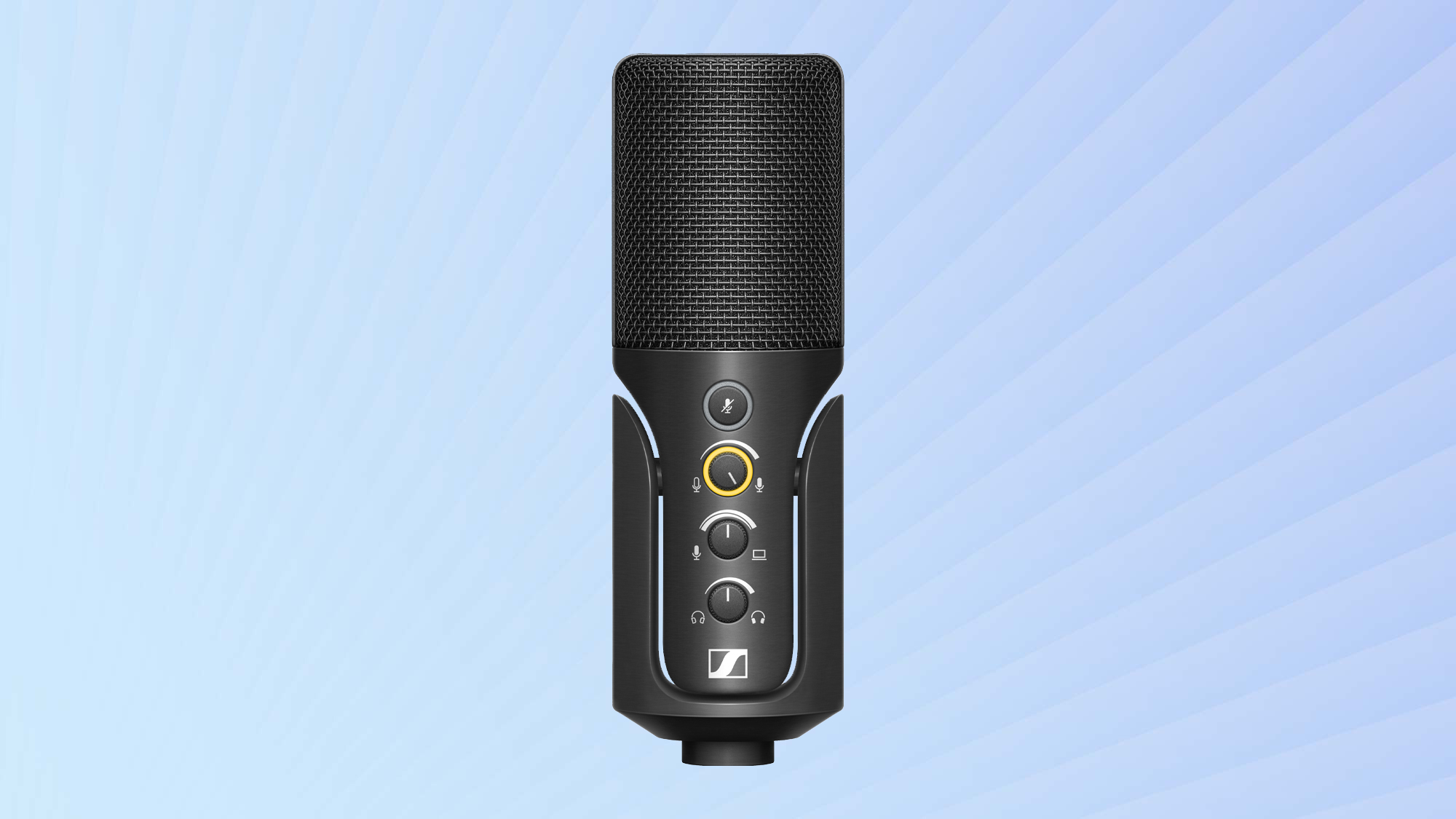
I put together the boom arm that came in the Streaming Set box before I toyed around with the mic. It’s easy to set up and doesn’t add to the clutter of an office or desk. The black metal finish looks great, and there’s a groove in the arm to fit the USB-C cable so that it doesn’t get in the way. An adjustable desk clamp at the bottom of the arm is the precursor to that studio feel.
The Sennheiser Profile mic itself is a beautiful piece of engineering. The front of the mic has four buttons, from top to bottom: mute/mic, gain control, mix control (between the mic and computer) and the headphone volume control. The back of the mic has a 3.5mm headphone jack and a USB-C port.
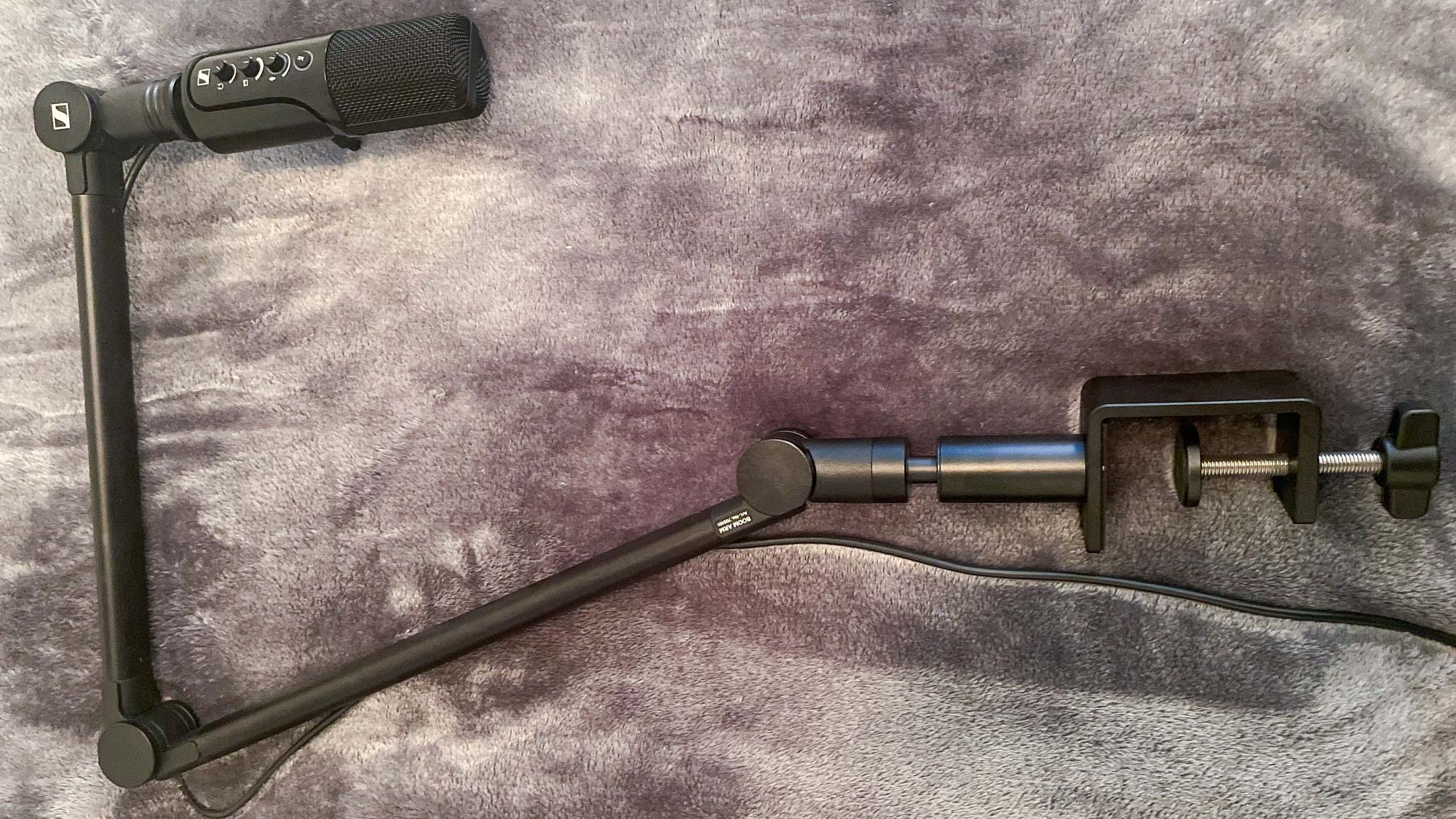
The mute/mic button glows red when in use, and the gain control has a feature where that same mute/mic button will glow a yellowish orange in the presence of hot signals and plosives. The mix control allows for monitoring between the mic and computer, and the headphone volume control is self-explanatory. With its black metal finish and sturdiness, the Profile mic is a work of art.
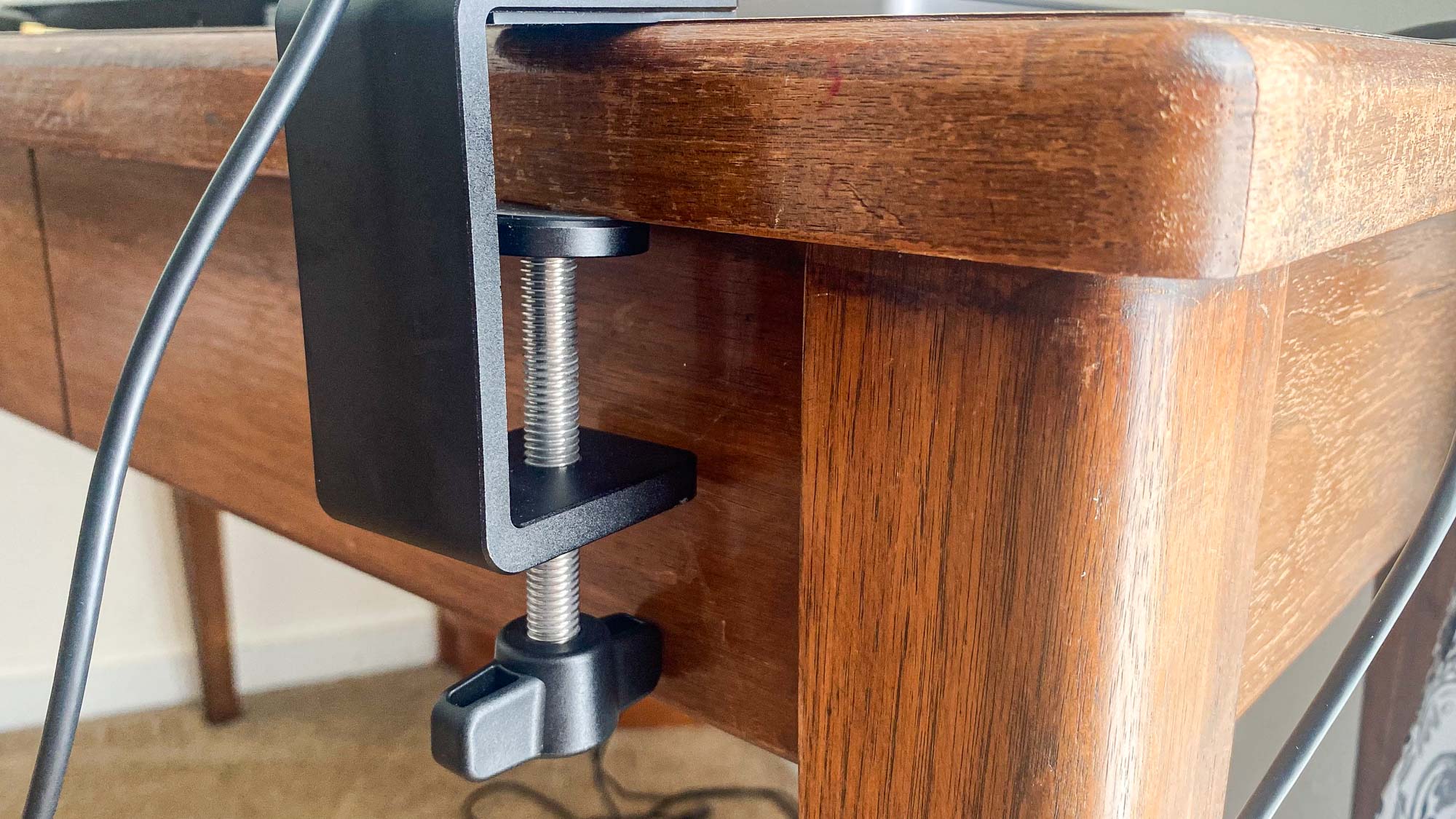
Put together, the mic and boom arm are a match made in heaven. The boom arm has three points of motion for varying levels of access, and the mic screws in easily to provide quality sound. Both the mic and boom arm are sturdy, and yes, I spiked the mic like a pigskin football a few times on my couch just to simulate the effect of having two kids under the age of five. Plug the USB-C cable into your computer, and you’ll see a green light. It’s time to go.
Sennheiser Profile review: Sound quality
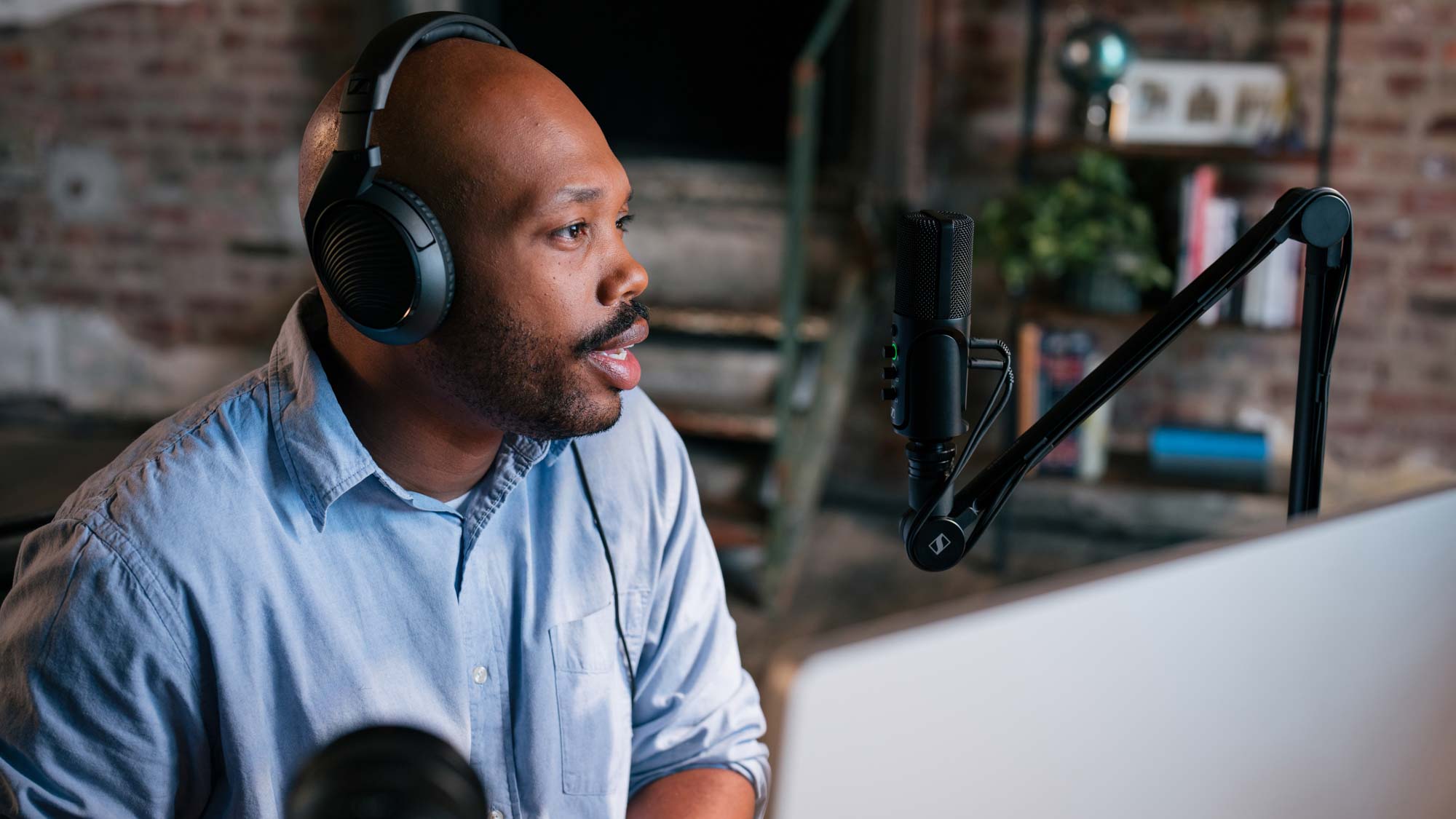
In short, the sound quality is amazing. I’ve been podcasting for close to 10 years, so I understand the importance of controlling plosives and other high-frequency signals. With that said, even a novice can understand that seeing the yellowish-orange LED light means to take caution with the gain control and with your own volume. Take the gain down a bit, or move back from the mic. This type of plug-and-play know-how is great and will help anyone on their way to great audio presentations.
While the externals of the mic and the boom arm are important, what really counts is on the inside. Sennheiser’s trademark German engineering shows up in the form of a cardioid condenser capsule that provides a great sound and keeps out the stuff we don’t want. The sound quality might change a bit with a desk stand, but one of the great advantages that comes with a boom arm is that the tapping on a desk or inadvertent bumps don’t show up nearly as much in the editing process. In fact, I recorded a session with the Profile and didn’t need to edit anything out due to background noise or plosives. First-time users should be able to read the quick start guide and make great sounding recordings like a pro.
Still, the presence of a pop filter would have been useful. It seems petty because the sound really is amazingly clear. But every little bit helps when building your recording setup.
Sennheiser Profile review: Verdict
My more professional mic setup is the Rode Podcaster, which is a multi-mic setup that's installed in my primary office. At home, my Blue Yeti setup — ranked top in our best USB microphones buying guide — has now been replaced by the Sennheiser Profile champion.
The reasons for replacing the Blue Yeti are the Sennheiser's functionality and professionality — it’s cool to have a mic in tow without having the clutter that a mic with a base entails. The Sennheiser Profile turns any office into a recording studio within minutes and works remarkably well with audio and visual presentations.
I could have easily given this mic five stars for its design flexibility and performance, but the lack of a pop filter keeps it from a perfect score. Don't let this stop you from trying out this masterpiece of a USB microphone though.
Ken J. Makin is a tech and entertainment writer for Tom’s Guide, and has nearly 20 years of experience as a journalist. He’s an avid podcaster and freelancer for various sites, including ESPN’s The Undefeated and The Christian Science Monitor. When he’s not podding or writing, Ken is likely spending time with his wife and children.


